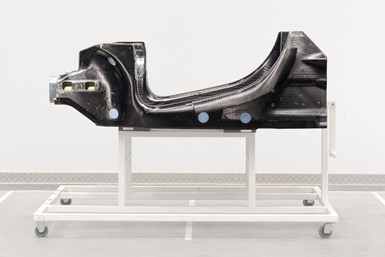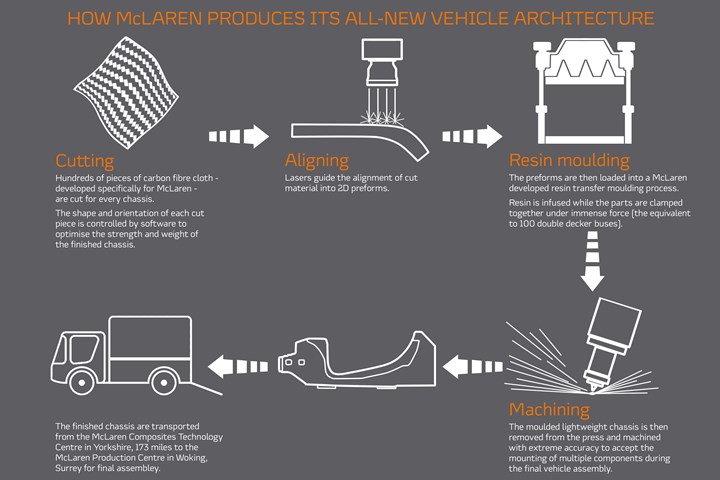McLaren Readies Lightweight Architecture for Future Hybrid Cars
Produced in-house, the carbon-fiber tub will start underpinning new models next year
#hybrid
McLaren Automotive is well known for its powerful, lightweight supercars.

Next-generation McLaren carbon fiber platform
So it’s no surprise that its upcoming hybrid-electric models will follow suit.
The next-generation vehicles will ride on a carbon fiber tub that McLaren says is lighter and more flexible than the company’s current MonoCell. That architecture was introduced a decade ago for the 12C and has since carried everything from the legendary P1 hybrid supercar to the recent Speedtail.
Hybrid Tub
Developed specifically for electrified vehicles, the new platform will be produced in-house at McLaren’s Composites Technology Center in Sheffield, England. McLaren currently sources carbon fiber chassis from Austria-based Carbo Tech, which will continue to supply carbon fiber components to the carmaker.
By taking over chassis production, McLaren aims to save about £10 million ($13 million) per year and streamline the development process. McLaren says it will use industry-first processes and techniques to maintain structural integrity and enhance safety while optimizing weight.

This includes a new high-pressure resin transfer molding process that McLaren says has the clamping force equivalent to 100 double-decker buses. The system also includes precision cutting, aligning and machining steps, with special algorithms to determine the ideal shape and orientation of each sheet of carbon fiber.
McLaren began physical testing of the chassis last year with the PLT-MCTC-01 (short for Prototype Lightweight Tub, McLaren Composites Technology Centre, Number One).
What’s Next?
The first new vehicle built on the architecture is due next year. The plug-in hybrid vehicle is expected to team a twin-turbo V-6 engine with an electric motor and have an all-electric range of 20 miles.
McLaren plans to offer hybrid variants of all its vehicles by 2023. A high-powered successor to the P1 with a twin-turbo V-8 also is said to be in the works.
RELATED CONTENT
-
Increasing Use of Structural Adhesives in Automotive
Can you glue a car together? Frank Billotto of DuPont Transportation & Industrial discusses the major role structural adhesives can play in vehicle assembly.
-
Multiple Choices for Light, High-Performance Chassis
How carbon fiber is utilized is as different as the vehicles on which it is used. From full carbon tubs to partial panels to welded steel tube sandwich structures, the only limitation is imagination.
-
Jeeps Modified for Moab
On Easter morning in Moab, Utah, when the population of that exceedingly-hard-to-get-to town in one of the most beautiful settings on Earth has more than doubled, some people won’t be hunting for Easter eggs, but will be trying to get a good look at one of the vehicles six that Jeep has prepared for real-life, fast-feedback from the assembled at the annual Easter Jeep Safari.








